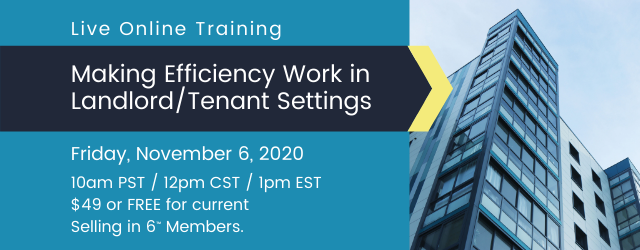Students often ask me about how to conduct sales meetings and presentations. We spend half a day on this subject during our Boot Camps, which is much more comprehensive and in depth. However, here are some basics I’ll share with you:

- Remember that you’re serving the needs of the customer, not yourself. Don’t attempt to sell any products and services that won’t benefit the potential customer.
- Share your enthusiasm. Of course, you need to make sure it's genuine enthusiasm. Prospects see through fake emotions easily, and the last thing you want to do is make them feel like they’re watching bad community theater.
- Prospects have a limited attention span. If you’re given an hour to present, budget 30-40 minutes for your content. Leave time for questions, conversation and silence for people to think.
- Structure your presentation around a few key ideas. People can’t digest everything you’re offering in one sitting! In the spirit of the one-page proposal, make it about the why. The what, the how, the how much and the when can come later.
- Speaking of one-page proposals, that’s a helpful benchmark for the meeting. Hand or send it out, have them read it, then go over its content point by point. Back yourself up with other materials you bring with you: case studies, a technical appendix, or any other materials your prospects might find relevant when making their decision.
- If you’re doing the presentation remotely and using software like GoToWebinar, people would like to see something pretty on the screen. If you're doing an in-person presentation, I really think that it should be a meeting of the minds, not a narration of bullet points on a slide.
- Some people communicate predominantly visually. Others are more auditory or kinesthetic. Make sure you cover all of these bases in your presentation. I’m not necessarily saying you should hand out brochures, but temper your presentation by using visuals, sound bites, and if possible, even interactive materials. The more people who resonate with your message on their preferred frequency (visual, auditory or kinesthetic), the more likely you’ll be able to make a genuine connection and ultimately the sale.







